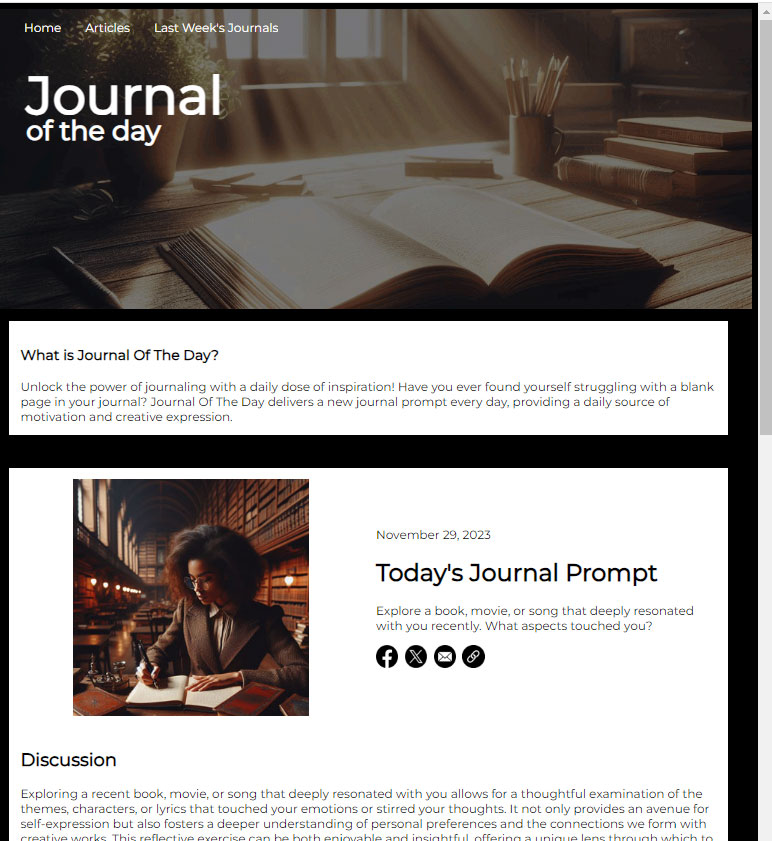
Website Design: Journal Of The Day
Glen Brunke, December 16, 2023In today's digital age, a well-designed website is crucial for creating a positive online experience for visitors. Whether you're a business owner, blogger, or creative professional, implementing best practices in web design can significantly impact your site's success. Below are five best practices that I considered when designing my journaling website, Journal Of the Day.

1. Responsive Design
I wanted to make the website responsive to different screen sizes and devices. With the increasing variety of smartphones and tablets, a mobile-friendly design is essential. Responsive design adapts your site's layout to provide an optimal viewing experience across various devices.2. Intuitive Navigation
Users should easily find what they're looking for and be able to perform their desired tasks on the website. Streamlining navigation enhances user experience and encourages longer visits. Also, making my content easy to share increases the likelihood of getting more inbound links to enhance SEO results.3. Visually Appealing Layout
Everyone wants their website to look great. I created a visually appealing layout with a clean and organized design. I used a consistent color scheme, typography, and imagery that align with the brand. White space is your friend; it helps prevent visual clutter and guides users' focus to key elements.4. SEO Optimization
It's crucial to implement basic SEO practices to improve website visibility on search engines. Using relevant keywords in content, header tags, and meeting the user's intent are must-have basics. Behind the scenes, creating tools to make content easier to navigate for robots can help keep all pages indexed so nothing gets lost. One example for Journal Of The Day is a robot-only page listed in the sitemap that lists all of the available journals: All Journals Robot Friendly Page.5. Security Measures
Of course, security is important; that was one big reason that I opted to create my own CMS (content management system) versus using popular tools like WordPress. There are bots constantly probing the internet looking for installed WordPress sites that haven't been updated; I see it every day in the server logs. Requests for things like /admin/ or certain WordPress configuration files are a common occurrence. WordPress is over 300K lines of code and growing, not counting the thousands of plug-ins, a challenging feat for code maintenance. By building your own CMS, you can simplify the code base and seal up common entry points for hackers. Is it a perfect solution? No, but it can be an effective defense against the onslaught of hacking that is sure to only grow over time.By incorporating these best practices into your website design, you can create a user-friendly and visually appealing online presence. Remember that a well-designed website not only attracts visitors but also retains them, fostering a positive and lasting impression of your brand.